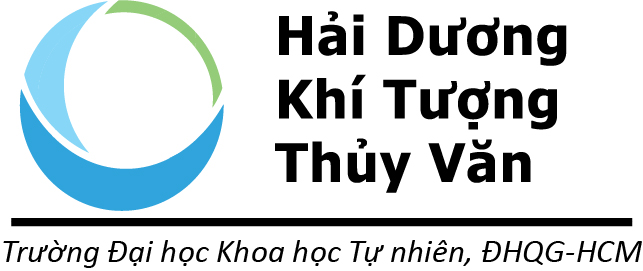In the context of a global shift from fossil fuels toward clean and renewable energy sources for a sustainable future, the ocean is emerging as a new frontier, holding an immense reserve of renewable energy. With more than 3,260 km of coastline stretching from north to south, Vietnam possesses an invaluable resource of marine renewable energy, including offshore wind, wave, current, and tidal power. Successfully harnessing these resources will not only provide a solution to national energy security but also serve as a strategic factor in positioning Vietnam as a clean energy hub in the region.
Vietnam’s marine energy potential is not evenly distributed but varies according to the geographical and hydro-meteorological characteristics of each region. This diversity offers the advantage of developing various types of extraction technologies. Among these, offshore wind is Vietnam’s most abundant and promising resource. According to a World Bank (WB) study, Vietnam’s total technical offshore wind potential is estimated at 475 GW—far exceeding the total installed capacity of the country’s current power system (World Bank, 2021). The south-central coastal waters, from Bình Định to Bình Thuận, and from Vũng Tàu to Cà Mau are considered high-potential areas, with average wind speeds at 50 m above sea level ranging from 7–10 m/s (Figure 1). An important advantage is that most of Vietnam’s wind potential lies in moderately shallow waters (less than 60 m), suitable for fixed-bottom turbine technology.

Figure 1: Map of average wind energy density potential at 50 m height in Vietnam’s offshore areas (Source: Global Solar Atlas)
However, deeper waters open opportunities for advanced floating turbine technology. Meanwhile, wave energy—generated by the interaction between the ocean and atmosphere—has a high spectral energy density, capable of producing efficient renewable energy. The central coastal waters, especially from Quảng Ngãi to Ninh Thuận, are areas of high wave energy potential due to their direct exposure to the East Sea and the strong influence of the northeast monsoon. Average wave energy density here can reach 15–20 kW/m of wave crest length. However, wave energy extraction technologies are still in the development phase and have yet to reach large-scale commercial deployment compared to wind power.
In addition, Vietnam has potential for current and tidal energy. Current energy is harnessed from the kinetic energy of moving water, while tidal energy is extracted from the potential energy created by the height difference between tides. Straits, estuaries, and waters around islands with strong currents are ideal sites with significant potential for this type of energy. The greatest advantage of current energy is its high predictability and reliability. Vietnam has both diurnal and mixed semi-diurnal tidal regimes, with tidal ranges not as large as global hotspots like Canada or the UK. However, small, enclosed bays such as certain coastal areas of Quảng Ninh and Hải Phòng, with tidal ranges of 3–4 m, could still be considered for small- to medium-scale projects using tidal barrage or lagoon technology.
The global race for marine energy technology is heating up. Since 2024, many breakthroughs have passed the testing stage and are ready for commercial deployment, promising to completely reshape the energy landscape.
Floating Offshore Wind Turbines (FOWT): This is the most revolutionary technology. Instead of being anchored directly to the seabed, turbines are placed on floating structures moored by cable systems (see Figure 2). This unlocks potential in deep waters (>60 m), which make up most of the ocean’s area. Floating platform designs, such as semi-submersible and tension-leg, are increasingly optimized for cost and stability. Projects like Hywind Tampen in Norway have demonstrated large-scale feasibility (Equinor, 2023).
Scaling Up Turbine Size and Efficiency: Leading manufacturers such as Vestas and GE Renewable Energy are pushing turbine capacities to 18–22 MW. Larger turbines not only generate more electricity but also reduce the number of turbines needed for a wind farm, lowering installation, operation, and maintenance costs per MW.

Figure 2: Model of a floating wind turbine with semi-submersible platform [7]
Integration of Artificial Intelligence (AI) and Digital Twin Technology: This technology creates a virtual model of the entire wind farm, allowing AI to analyze real-time data to predict failures, optimize turbine yaw angles according to wind and wave conditions, and plan maintenance—thereby increasing efficiency and reducing downtime.
Integrated Wind-Wave Systems: One of the newest renewable energy trends involves integrating wave energy devices directly into the floating wind turbine platform (see Figure 3). This approach shares infrastructure costs (floating structures, subsea cables), optimizes marine space usage, and produces more stable electricity. Swedish startup SeaTwirl is developing vertical-axis wind turbines with integrated energy storage, which can be combined with wave energy converters.

Figure 3: Model of integrated offshore wind and wave energy system [2]
Orbital O2 Floating Tidal Stream Turbine: Regarded as the world’s most powerful and advanced tidal turbine, the O2 was developed by Orbital Marine Power (Scotland). Its design resembles a long vessel that can be towed to the installation site and moored (see Figure 4). Two rotors on either side can be lifted above the water for easy maintenance. This technology significantly reduces installation and operation costs compared to seabed-fixed turbines. It has been grid-connected and in commercial operation since 2021, opening a new path for the industry (Orbital Marine Power, 2024).

Figure 4: O2 floating tidal turbine by Orbital Marine Power [5]
The ocean is moving beyond its traditional role as a space for trade and resource exploitation to become the future of clean energy for Vietnam. The potential is immense, and global breakthrough technologies are providing more powerful tools than ever to tap into these resources. The journey to transform Vietnam into a marine energy powerhouse will be full of challenges, but with strategic vision, decisive policy, and smart investment, it is no longer a matter of “if” but “when” and “how.” Vietnam now stands at a historic opportunity to make a quantum leap in energy security and sustainable development—fueled by the very power of its own seas.
References
- CorPower Ocean. (2024). Technology – Wave Energy Converters. Retrieved from CorPower Ocean official website.
- Ding Peng Liu, Lance Manuel & Ryan G. Coe. (2025) Toward Extending the Life of a Floating Offshore Wind Turbine Using Sheltering From Upstream Wave Energy Converters. Journal of Offshore Mechanics and Arctic Engineering 147:6.
- Equinor. (2023). Hywind Tampen – The world’s largest floating wind farm is now in operation. Retrieved from Equinor official website.
- International Renewable Energy Agency (IRENA). (2023). Innovation Outlook: Offshore Wind.
- Orbital Marine Power. (2024). The O2 – The world’s most powerful tidal turbine. Retrieved from Orbital Marine Power official website.
- World Bank. (2021). Vietnam’s Offshore Wind Development Roadmap. The World Bank Group.
- https://www.empireengineering.co.uk
![]()



 VN
VN